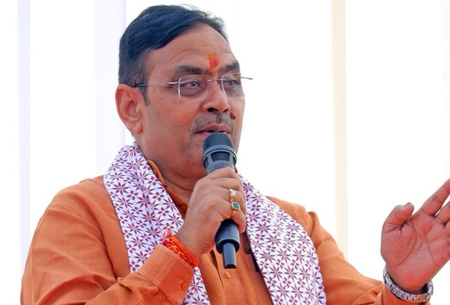Copyright The Boston Globe

Since early September, 43 percent of tickets remained unsold for the typical production. That means that, at most, 57 percent of tickets were sold for the typical production - and some tickets may have been “comps,” which are given away, often to staff members or the press. That compares with 93 percent sold or comped in fall 2024 and 80 percent in fall 2023. The Post collected and analyzed ticket sales data from Sept. 3 to Oct. 19, which reveals an across-the-board drop-off in the center’s major theaters: the Opera House, the Concert Hall and the Eisenhower Theater. The performances include National Symphony Orchestra programs, touring Broadway musicals and dance performances. The Kennedy Center did not respond to a request for comment. Overall, the center could have sold tickets to roughly 143,000 seats during this time period. Of those, more than 50,000 have remained vacant. The Post also analyzed internal Kennedy Center sales figures from past years and credit and debit card transaction data, which underscores what patrons can see with their own eyes: Unfilled seats are now a regular feature of Washington’s national center for the performing arts. According to the spending data, drawn from 40 million credit and debit cards analyzed by the consumer data and analytics company Consumer Edge, less than half as much money was spent on tickets in September and the first half of October 2025 as during that same period in 2024. This is less than people spent on the center during any other year since 2018 except 2020, when the venue was locked down for most of the year. The drop in ticket buying may have broader consequences. Fewer patrons in chairs could lead to fewer donations, warned Michael Kaiser, who served from 2001 to 2014 as president of the Kennedy Center, where he boasted a budget surplus every year. “Depressed ticket sales not only cause a shortfall in revenue; they also bode unfavorably for future fundraising revenue,” Kaiser wrote in an email after reviewing The Post’s findings. “The vast majority of donors are ticket buyers who are anxious to enhance their relationships with the organization by making contributions in addition to paying for their tickets. We had 40,000 generous individual donors by the time I left the Center in 2014. Funding from these individuals formed the foundation for all we accomplished.” It is unclear what the Kennedy Center’s overall revenue picture looks like at the moment. The center has declined several requests from The Post to share concrete details about its financials. Ticket sales usually account for less than half of its revenue, according to the center’s publicly available tax returns from the past several years. The center also relies on corporate sponsorships, event rentals, philanthropic giving and other sources of income. Its building operations are funded by the federal government. To compare the current sales to past seasons, The Post obtained internal “all-discipline” reports from the last several years. These share final ticket sales, revenue, attendance and more for all shows at the center from fall 2021 through the start of summer 2025. They used to be shared with all employees every Wednesday, but the new leadership ended the practice this summer. Despite Grenell’s critique of the former Kennedy Center management, swaths of empty seats were an unusual sight in the large venues before the takeover, according to The Post’s analysis. From September to mid-October last year, on average, only 7 percent of seats were available for a typical production on the day of the performance. In 2023, 20 percent of seats were unsold. In 2022, a robust year for the center, only 6 percent of seats were available. In 2021, as the center was reopening during the coronavirus pandemic, 34 percent of seats went unsold - a bit less than this year, when the median production had about 43 percent of seats available. “Given the unprecedented takeover of a nonpartisan arts institution combined with the inexperience and rhetoric of the new management, I expected a decline in sales; however, it is truly shocking to see that these actions have been worse for business at the Kennedy Center than the aftermath of a global pandemic,” a former staff member said via messaging app, speaking on the condition of anonymity out of fear of professional blowback. “These numbers are likely more dire than they appear, as they don’t account for canceled productions or shows moved into smaller theaters due to weak ticket sales.” There may be multiple reasons for the dip in ticket sales. On Broadway, musical theater sales are down, as the New York Times recently reported. The Trump administration’s recent National Guard deployment has hurt both tourism and nightlife in Washington. And many former Kennedy Center patrons have pledged to boycott the institution until Trump is no longer chair. “This downturn isn’t just about pricing or programming - it feels directly tied to the new regime’s leadership shift and the broader political climate,” said a current staff member, speaking on the condition of anonymity for fear of reprisal. “I’ve heard from ticket buyers who say they’re choosing not to attend because of what the Kennedy Center now represents. The brand itself has become polarizing, which is unprecedented in my experience.” Since 2018, in the same 45-day period The Post analyzed, only six shows had fewer than half of their seats filled. Five of them - all orchestra concerts - were this year. Among them was “The Legacy of John Williams and Steven Spielberg,” part of the National Symphony Orchestra’s Pops series, which typically brings in a broader audience. During the concert, which one of this article’s reporters attended, the ushers repeatedly encouraged audience members to move up to more expensive seats, as much of the orchestra section was empty. The top two tiers, which were originally available for purchase, were closed several days before the three-performance run because of low ticket sales. “We are doing the big things that people want to see,” Grenell recently wrote on X. “We are seeing a huge change because people are recognizing that they want to be a part of something that is common-sense programming,” he continued, employing a phrase he has often used while describing his plans for the Kennedy Center. (Grenell has repeatedly declined interview requests from The Post.) The week after Trump announced his plans to take over the center, ticket sales dropped by 50 percent, several staff members said at the time. Months later, sales of subscriptions to the major seasons (theater, opera, etc.) were down by 36 percent, according to internal data obtained by The Post. And the numbers remain dismal. There has been an influx of Christian programming, but many of these events have been free to the public. Numerous programming executives have resigned or been dismissed, part of a broader trend of layoffs at the center. The programming of the theater and the National Symphony Orchestra, in particular, is similar to previous years. One major difference was a high-dollar fundraiser that Trump hosted to open the summer run of “Les Misérables.” Another is the numerous artists who have said they won’t perform there. Some adjustments are evident. The center moved “Parade” - a Tony-winning musical that ran from Aug. 19 to Sept. 7 - from the 2,364-seat Opera House, where it was originally slated to run, to the 1,161-seat Eisenhower Theater. In the last few days of its run, 43 percent of seats were available. “The Sound of Music,” which included 32 performances from Sept. 9 to Oct. 5, was a centerpiece of the fall schedule. “This is a beloved classic for so many people, and exactly the type of popular show you can expect on our stages from the new leadership,” Roma Daravi, the Kennedy Center’s vice president of public relations, told the Washington Reporter. Grenell agreed, telling the outlet, “We are trying to be financially responsible and give shows that are common sense, blockbuster hits with the public.” But it wasn’t a hit. While some performances nearly sold out, on average about one-third of the seats were still for sale day-of. Grenell and other members of the center’s new leadership team have repeatedly claimed the center was deep in debt, paying its employees from debt reserves, and even accused the former leadership of fraud, which those leaders deny. Shows selling this poorly leave more than $1 million in potential revenue on the table - just 45 days into the season. Consider a recent run of the National Symphony Orchestra’s “An Evening of Beethoven.” For the three shows, more than 2,000 seats, worth about $110,000, were still available day-of, according to The Post’s analysis of listed prices on the Kennedy Center’s ticketing website on the morning before each performance. About $330,000 worth of seats were filled, according to the listed prices - but it is unclear how many were comps, which do not generate revenue. Indeed, several Kennedy Center staff members have told The Post they’ve received far more free tickets than in previous years. The center has on occasion offered hundreds of comp seats for shows to “paper the house,” or to make it look like ticket sales are higher than they actually are, according to one staff member with knowledge of ticketing, speaking on the condition of anonymity out of fear of reprisal. “All in all, it is not a sustainable situation,” this staff member said. The blowback to Trump’s takeover already extends into next year. “Hamilton” probably would have been the center’s biggest show in 2026, but the producers pulled out this summer. Its producer Jeffrey Seller said at the time that the show was incompatible with “a new spirit of partisanship … [at] the national treasure that is the Kennedy Center.” “‘Hamilton’ was proudly performed at the Kennedy Center in 2018 during the first Trump administration,” Seller said. “We are not acting against his administration, but against the partisan policies of the Kennedy Center as a result of his recent takeover.” Grenell called the cancellation a sign of political intolerance to conservative audiences. The “Hamilton” run in 2022 sold $26 million in tickets (including subscriptions). The center paid Seller’s production company a $22.7 million fee, according to tax filings, and spent about $700,000 on marketing, according to the 2022 final all-discipline report. That’s to say nothing of the merchandise and concession sales generated by the more than 160,000 attendees. The current leadership has not publicly acknowledged any challenges with ticket sales. But the chairman of the board has been serving as a pitchman. In a recent Truth Social post, Trump praised the building’s newly painted columns and referred to the center as the “TRUMP KENNEDY, whoops, I mean KENNEDY CENTER.” He also encouraged people to visit a building that “will soon be the finest Arts and Entertainment Center anywhere in the World.” “Come see for yourself,” Trump wrote. “We are remaining fully open during construction, renovation, and beautification.” On a daily basis, The Post recorded the number of tickets available for 63 performances at the Kennedy Center’s Opera House, Concert Hall and Eisenhower Theater from Sept. 3 to Oct. 19. The figures all came from the venue’s ticketing sales website. We compared that to per-production sales figures contained in the Kennedy Center’s All Discipline Reports for fiscal 2022, 2023, 2024 and partial data for fiscal 2025. We calculated the share of seats still available for sale on the day of each performance (or for four weekend matinee shows, the day before), using the number of seats shown in the ticketing system for the theater as the denominator. For prior years, we calculated the percentage of seats available as the venue capacity minus tickets sold, tickets comped and blacked-out seats, to get a figure comparable to the number of seats available for sale on the website. Blacked-out seats are treated as unavailable, so the capacity is constant for all shows in a given venue. For some slow-selling shows this year, the Kennedy Center blocked out whole sections of a theater. If a tier of seats was completely unavailable for sale every day in the week leading up to a performance, and if at least 25 percent of seats in the “Box & Chorister” or “Box Tier” section were available (to distinguish a near-sellout of the top tiers from those seats being unavailable for sale), then The Post’s analysis treated those seats as unsold. This was the case for 10 shows. For calculating the median seat availability, Kennedy Center internal data for 2021-2024 is from internal “all-discipline” reports that summarize sales for each production, regardless of how many shows occurred. The Post looked at any production that had performances between Sept. 3 and Oct. 19. For 2025 data gathered by The Post, the data includes only performances that occurred within that date range.



